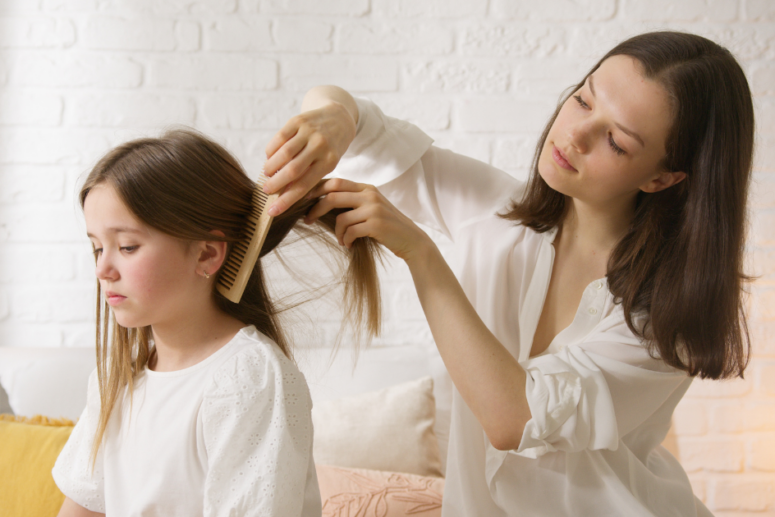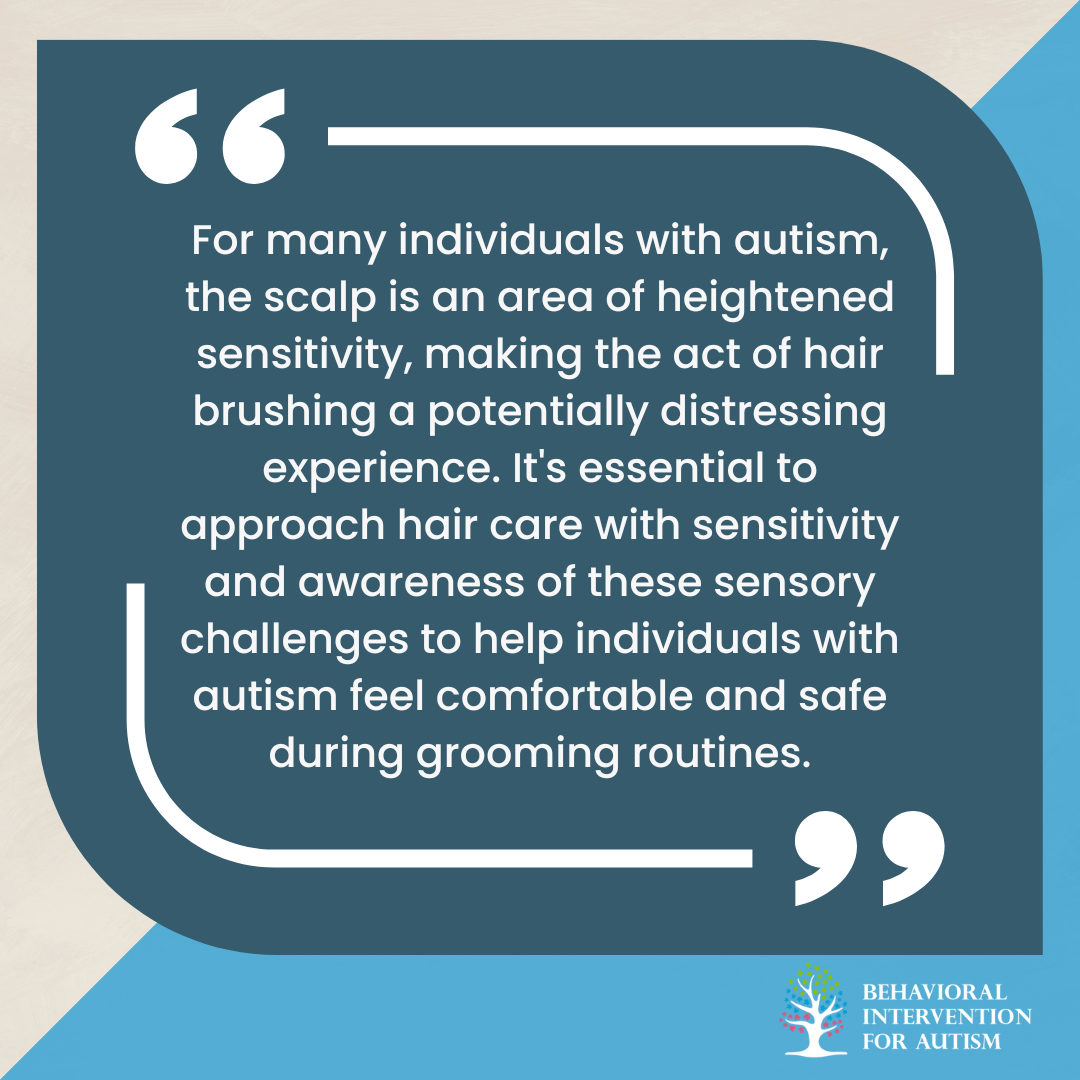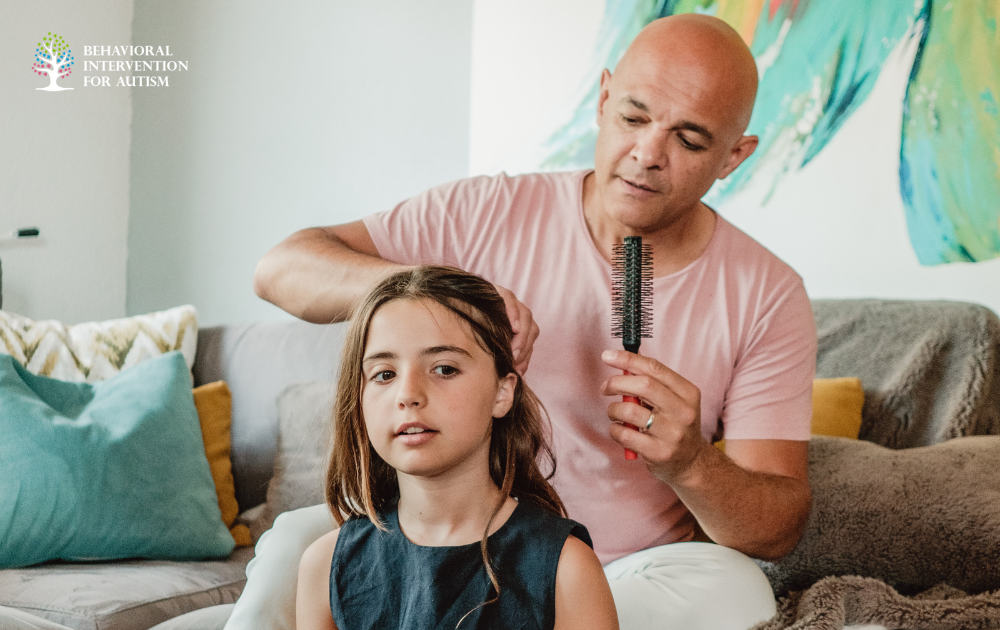
Table of Contents
Understanding the sensory challenges individuals with autism face is crucial, especially regarding hair brushing. Sensory sensitivities significantly impact how they experience daily activities, including hair care.
Sensory Sensitivities in Autism
Children with sensory sensitivities, including those with autism, can find the experience of hair brushing and detangling challenging. These sensitivities may stem from having a sensitive scalp, discomfort when hair is being tugged or pulled, heightened hearing sensitivity to the sound of brushing, or feeling overwhelmed when dealing with knots in the hair.

Impact of Sensory Overload
Sensory overload, often associated with conditions like autism and sensory processing disorder, can significantly impact how individuals with autism experience hair brushing. The scalp’s sensitivity, which can be amplified in individuals with autism, may lead to sensory overload if the challenges related to sensory sensitivities are not addressed effectively.
Sensory overload during hair brushing can lead to increased stress, discomfort, or anxiety for individuals with autism, complicating the grooming process. Recognizing the effects of sensory overload and employing strategies to alleviate these challenges is vital for ensuring a positive and comfortable hair care experience.
Hair Brushing Strategies for Autistic Individuals
Ensuring a positive hair brushing experience for individuals with autism involves implementing specific strategies and techniques tailored to their sensory needs. By incorporating soft hair accessories, gentle head massages, and maintaining a consistent hair care routine, caregivers can help promote comfort and reduce potential stress during hair care sessions.
Soft Hair Accessories
Utilizing softer hair accessories, such as blunt-tipped combs or brushes, can significantly alleviate sensory discomfort in individuals with autism. The choice of accessories should prioritize comfort and avoid tight application, as this can enhance the overall experience of hair brushing. By opting for gentle tools, caregivers can create a more soothing and sensory-friendly environment during grooming sessions.

Gentle Head Massage
Introducing a gentle head massage before the hair brushing process can help individuals with autism relax and prepare for the sensory input of the grooming activity. The calming effect of a gentle head massage, coupled with the use of sensitive shampoos, can enhance comfort and reduce resistance during hair care routines. This approach can serve as a reassuring and comforting precursor to the brushing process, promoting a more positive grooming experience.
Consistent Hair Care Routine
Establishing a consistent hair care routine is paramount for individuals with autism, as it can gradually familiarize them with the grooming process and mitigate sensory challenges associated with hair brushing. A structured routine that includes using the right hair accessories and demonstrating the outcomes of a haircut can contribute to a smoother and less stressful experience for both the individual and the caregiver.
Gradually introducing the hair brushing process helps build trust and comfort around grooming. Caregivers can start by allowing the individual to interact with the brush and feel its texture, then progress to gently brushing small sections of hair. This patient approach respects the individual’s sensory sensitivities. Providing a supportive environment and avoiding a rushed process is essential to accommodate the unique needs of individuals with autism during hair care sessions.
Gradual Hair Brushing Techniques
Hair brushing for individuals with autism can be smoother and more comfortable by using gradual techniques. Introducing the brush gently helps reduce sensory challenges, making the experience more enjoyable for both the individual and the caregiver.
Introducing the Brush
To start the hair brushing process, it is essential to introduce the brush gradually. Allow the individual to hold and feel the brush, familiarizing themselves with the texture and sensation of the bristles. This step is crucial in building trust and comfort before proceeding to actual hair brushing.
Taking the time to let the individual interact with the brush at their own pace can help alleviate anxiety and sensory overload. Encourage them to explore the brush, allowing them to control the initial interaction and gradually increasing their comfort level with the tool.
Slow and Gentle Approach
Proceeding with a slow and gentle approach is key when transitioning from brush exploration to actual hair brushing. Start by brushing a small portion of the individual’s hair, focusing on one section at a time. Pay attention to their reactions and adjust the pressure and speed of brushing accordingly.
Avoid rushing through the brushing process and provide breaks if needed. By maintaining a calm and patient demeanor, caregivers can create a safe and supportive environment for the individual. This approach helps build positive associations with hair brushing and reduces the likelihood of sensory overload or negative reactions.
Incorporating sensory-friendly tools such as a sensory hairbrush with soft bristles can further enhance the comfort level during hair brushing. These specialized brushes are designed to minimize discomfort on sensitive scalps, making the experience more tolerable for individuals with sensory sensitivities.
Implementing gradual hair brushing techniques that prioritize sensitivity and individual preferences helps caregivers effectively support individuals with autism during hair care routines. Consistency, patience, and understanding are essential for promoting a positive and comfortable hair brushing experience.

Support and Resources
Navigating the challenges of hair brushing for individuals with autism can be a daunting task for parents and caregivers. Fortunately, there are support groups and resources available to provide guidance, understanding, and valuable insights on managing sensory sensitivities and difficulties related to hair brushing.
Parental Support Groups
Parental support groups play a crucial role in connecting caregivers of individuals with autism who are facing challenges with activities like hair brushing and haircuts. These groups provide a safe and understanding space where parents can share their experiences, exchange practical tips, and offer emotional support to one another.
Interacting with parents who share similar experiences allows caregivers to better understand their child’s sensory issues and behavior patterns. The collective knowledge in these support groups helps parents feel less isolated and more empowered to address their child’s specific needs, such as during hair brushing.
Valuable Insights and Tips
In addition to support groups, there are various resources and tools available that offer valuable insights and practical tips for parents and caregivers of individuals with autism. These resources can include online articles, books, seminars, and workshops focused on sensory processing disorder and effective strategies for managing sensory challenges during hair brushing.
Understanding the core features of autism, such as sensory processing disorder, can provide caregivers with a deeper insight into why individuals with autism may struggle with hair brushing. The hypersensitivity to touch and sound can make the hair brushing experience overwhelming and uncomfortable for individuals on the autism spectrum.
Utilizing these resources, parents and caregivers can create tailored hair brushing approaches that cater to the unique sensory needs of individuals with autism. Implementing alternative brushing techniques and establishing a calming routine can significantly enhance the experience for both the individual and the caregiver.
Brushing hair can be a challenging experience for individuals with autism, as it often involves sensory sensitivities and discomfort. Understanding these challenges is key to making hair brushing a more positive routine. We can offer strategies that help ease this process, promoting a sense of calm and cooperation.
Behavioral Intervention for Autism provides tailored ABA therapy in Florida that addresses these specific needs, ensuring that each individual feels comfortable and supported during daily activities. Our dedicated team works closely with families to create effective strategies that enhance the overall experience. If you’re interested in learning more about how our services can help, connect with us today!
- 9 Common Obsessions of Children With Autism You Should Know - February 25, 2025
- What is Neurodiversity? A Guide to Embracing Differences - February 25, 2025
- Understanding Hyperfocus in Autism: What It Means and Why It Happens - February 25, 2025
